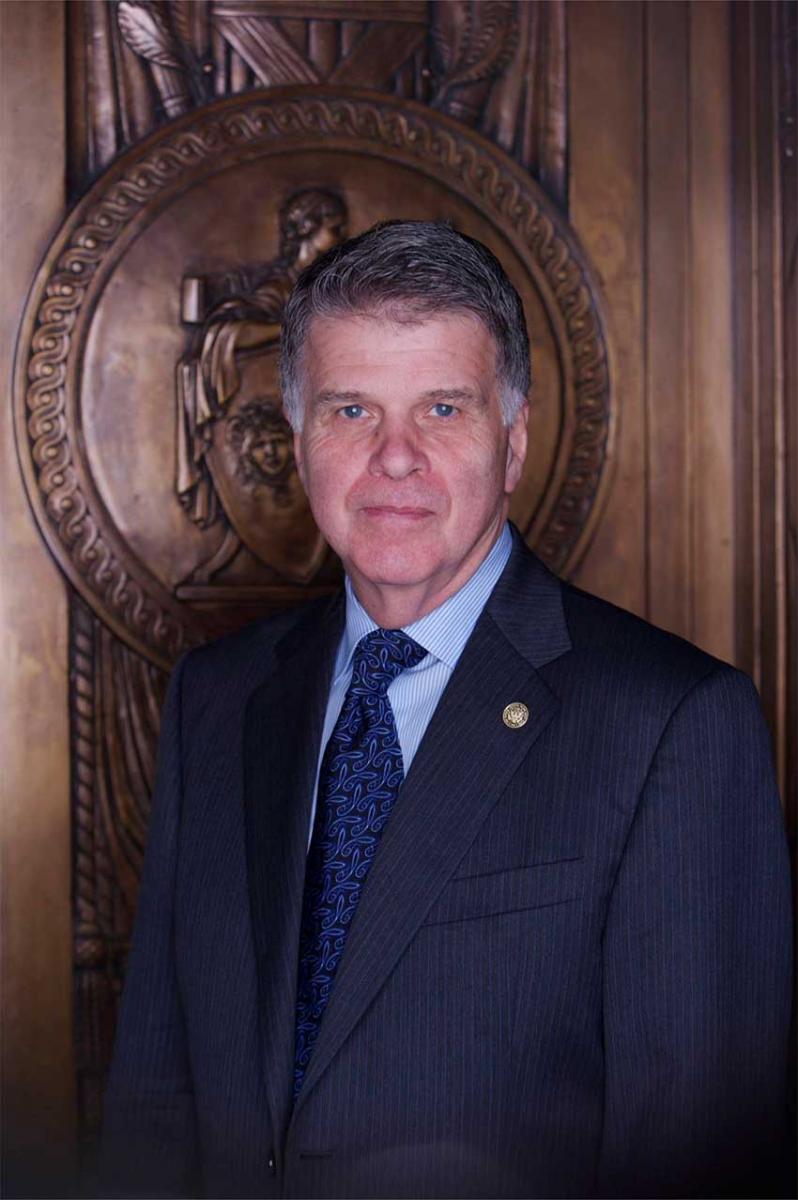
Remarks made by Archivist at the Independence Day Ceremony
On the portico of the National Archives Building July 4, 2014
Thanks to Steve Scully for joining us for his third year as emcee of our 4th of July activities.
Good morning and Happy Fourth of July to all of you! Thanks for joining us in this celebration of the 238th birthday of the Declaration of Independence!
238 years ago, the Continental Congress adopted the Declaration. And John Adams envisioned future celebrations of the event. He wrote: "It ought to be commemorated, as the Day of Deliverance by solemn acts of Devotion to God Almighty. It out to be solemnized with Pomp and Parade, with Shews, Games, Sports, Guns, Bells, Bonfires and Illuminations from one End of this Continent to the other from this Time forward for ever more."
That vision of the future got off to a slow, but no less passionate start. On July 5, 1777, John Adams wrote to his daughter from Philadelphia describing events of the first anniversary: Invited to dine with President Washington aboard the frigate Delaware, Adams wrote: "…we were saluted with a discharge of thirteen guns, which was followed by thirteen others, from each other armed vessel in the river; then the gallies followed the fire, and after them the guard boats. The President and company were saluted with three cheers, from every ship, galley, and boat in the river. The wharves and shores, were lined with a vast concourse of people, all shouting and huzzaing, in a manner which gave great joy to every friend to this country, and the utmost terror and dismay to every lurking tory."
Adams continues: "In the evening, I was walking about the streets for a little fresh air and exercise, and was surprised to fine the whole city lighting up their candles at the windows. I walked most of the evening, and I think it was the most splendid illumination I ever saw; a few surly houses were dark, but the lights were very universal. Considering the lateness of the design and the suddenness of the execution, I was amazed at the universal joy and alacrity that was discovered, and at the brilliancy and splendor of every part of this joyful exhibition. I had forgot the ringing of the bells all day and evening, and the bonfires in the streets, and the fireworks played off. Had General Howe been here in disguise, or his master, this show would have given them the heart-ache."
The parchment document enshrined in the Rotunda behind me has had an amazing journey since it was signed on August 2, 1776.
During the Revolutionary War, the Declaration was rolled up and moved from city to city as Congress moved to avoid capture by the British.
When the British were burning Washington during the War of 1812, Stephen Pleasonton, a clerk in the State Department, was directed by then Secretary of State James Monroe, to get the important documents out of town. Clerks wrapped the Declaration and other precious documents in bags of linen, commandeered wagons, and in the dead of night headed for Virginia with the records of the country. First, they hid the Declaration in an unused gristmill near Chain Bridge in Virginia, then in a private home in Leesburg until the war was over.
During the 1800s, the Declaration was on exhibit for long periods at several locations in Washington, where it was exposed to sunlight, fluctuating temperatures, and humidity—all of which took their toll on the document.
Finally, officials took note of these effects of aging, and wrapped the Declaration and stored it flat at the State Department, where it joined the Constitution until 1921, when President Harding signed an order transferring both of those documents to the Library of Congress.
Just before Pearl Harbor and the U.S. entrance into World War II, the Library sent the Declaration and the Constitution to Fort Knox for safekeeping, where they remained until September 1944, and came back to the Library of Congress.
Finally, in 1952, the documents came to their rightful home here at the National Archives. The transfer occurred on December 13, 1952, with great pomp and circumstance and security, as the newly encased Declaration of Independence was carried up these steps into the Rotunda.
And the Declaration of Independence was safe until 2004 when the good treasurer hunter, Nicholas Cage, cleverly stole it during a party in this building—to protect it from the evil treasure hunter. And our National Treasure was miraculously and circuitously restored to its rightful place and now poses the most often asked question in the Rotunda. "Can we see the map on the back?"
And I can tell you for certain that the only thing on the back of the Declaration are the words "Original Declaration of Independence dated 4 July 1776."
Although the traveling days of the Declaration are over, the spirit of the Declaration continues on today. And soon we'll hear the words of the Declaration of Independence read aloud by our honored guests. And being here today makes you part of the Declaration's journey.
After our ceremonies, you can enjoy our family activities and view the Declaration of Independence. Check out John Hancock's signature! And then check out our newest exhibit: "Making Their Mark: Stories Through Signatures," where you can create your own John Hancock signature from the autopen machine.
Thanks for coming out today to celebrate our independence at the home of the Declaration of Independence. And enjoy the rest of our ceremony!
 The Archivist of the United States is the head of our agency, appointed by the President of the United States.
The Archivist of the United States is the head of our agency, appointed by the President of the United States.